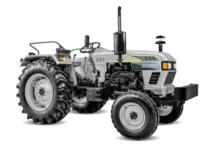Telematics represents a dynamic and influential field that merges telecommunications with informatics, playing a pivotal role in modern transportation and communication systems. Let’s embark on a journey to understand the fundamentals and advanced applications of this innovative domain and answer the question, “What is telematics?”.
What is a telematics system?
Telematics, a term derived from “telecommunications” and “informatics,” refers to the integrated use of telecommunications and informatics. In the automotive industry, telematics involves the transmission of data over long distances, merging telecommunications with vehicle information.
Telematics is also known as black box technology and is used for diverse purposes, like car concierge services or behavior-based car insurance. But it is mostly used in fleet management.
Telematics allows asset and vehicle tracking and remote management. The technology helps gather information about the tracked asset and get an extensive overview of its behavior. Urban challenges are also resolved with the use of telematics — the rise of the smart city concept is maximizing the efficiency of urban infrastructure.
What is a telematics device in a car?
Telematics features in a car are represented by a GPS receiver that looks like a black box and is installed in a vehicle to collect telematics data. The receiver collects information on the location, performance, and condition of the car to store and further transmit it to other systems or devices via wireless networks. Then the information can be visualized with software to analyze and enhance the car’s resource management.
As a rule, telematics technology for vehicles combines cloud and custom IoT development services, along with hardware and software for GPS tracking, integrations with other systems, and real-time AI capabilities. The black box device is connected to an interface inside the vehicle to provide feedback on the driving, the vehicle’s performance, warnings, and various other notifications.
How does telematics work?
Telematics technology refers to the process of working with data, and it consists of 4 steps: data collection, storage and transmission, and fleet management software operations.
Telematics technology has evolved to encompass a wide range of other functionalities, including but not limited to:
- Location Tracking: Telematics enables precise tracking of a vehicle’s location in real-time, providing accurate and up-to-date information on its geographical coordinates.
- Vehicle Diagnostics: By incorporating sensors and diagnostic tools, telematics can monitor the health of a vehicle’s engine, transmission, and other crucial components, identifying potential issues before they become major problems.
- Driver Behavior Monitoring: Telematics systems can track and analyze driver behavior, including speed, braking patterns, and adherence to traffic rules. This information aids in promoting safe driving practices and assessing risk factors.
- Fuel Efficiency Monitoring: Telematics can provide insights into fuel consumption patterns, helping optimize routes and driving behaviors to enhance overall fuel efficiency.
- Remote Vehicle Control: In some advanced telematics systems, remote vehicle control features allow for actions such as unlocking doors, starting the engine, or activating vehicle functions through a mobile or web-based platform.
Who benefits from telematics?
Telematics finds widespread application across diverse industries, proving its versatility and adaptability. Let’s look at some key sectors where telematics plays a crucial role:
- Telematics benefits everyday drivers by providing real-time information on vehicle performance, fuel efficiency, and maintenance needs.
- Telematics aids taxi services in optimizing route planning, monitoring driver behavior, and enhancing overall fleet management. This leads to enhanced customer satisfaction, reduced fuel costs, and improved overall operational efficiency.
- For delivery companies, telematics streamlines logistics, improves route efficiency, minimizes delays, and provides real-time tracking of shipments.This results in timely deliveries, reduced fuel consumption, and increased customer trust.
- Telematics is instrumental for logistics companies, offering precise tracking of shipments, monitoring vehicle conditions, and optimizing supply chain management. It optimizes route planning, reduces idle time, and enhances overall fleet management.
- Telematics benefits service stations by enabling remote diagnostics, predictive maintenance scheduling, and personalized customer support. This results in improved customer service and streamlined maintenance processes.
Implementing telematics systems
Implementing telematics requires collaboration between technology providers, telecommunications experts, and industry-specific professionals. Specialized telematics service providers offer tailored solutions for different sectors, ensuring seamless integration and optimal utilization of telematics technology.
Euristiq emerges as a key player in the development and implementation of telematics solutions. As a forward-thinking team, Euristiq specializes in crafting tailored telematics systems that meet the unique needs of their clients. Their expertise extends to creating comprehensive solutions for tracking, analyzing, and optimizing vehicle-related data.
The future of telematics and fleet tracking
Telematics technology is evolving and is expected to reach a global value of $179 billion by 2028 (compared to $59 billion in 2020). Here are the future trends in the industry:
- expansion of telematics use to individual vehicles
- 5G for telematics connectivity to devices and systems
- autonomous vehicles equipped with telematics
But with the development of technology, a new concern occurs too — the protection of data shared. Since more data will be logged in more vehicles and shared with companies for vehicle management and insurance, innovative data privacy and protection solutions need to be found.
In conclusion, we must say that in a world increasingly reliant on connectivity and real-time data, telematics emerges as a transformative force. Whether enhancing the efficiency of taxi services, streamlining delivery logistics, optimizing supply chains for logistics companies, or revolutionizing vehicle maintenance at service stations, telematics offers a myriad of benefits. The implementation of telematics is not limited to a specific group; rather, it is a collaborative effort that involves various stakeholders, ranging from technology experts to industry professionals, paving the way for a more connected and data-driven future.



































































